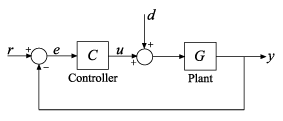pidtuneOptions
Define options for pidtune function
Description
Use a pidtuneOptions object to specify properties for tuning a
PID controller using the pidtune function.
Creation
Description
opt = pidTuneOptionspistuneOptions object with default properties.
opt = pidtuneOptions(Name=Value)opt =
pidtuneOptions(PhaseMargin=55) creates an options object with a phase margin
of 55 degrees.
Before R2021a, use commas to separate each name and value, and enclose
Name in quotes. For example, opt =
pidtuneOptions("PhaseMargin",55)creates an options object with a phase margin
of 55 degrees.
Properties
Object Functions
pidtune | PID tuning algorithm for linear plant model |
Examples
Tips
Version History
Introduced in R2010b
